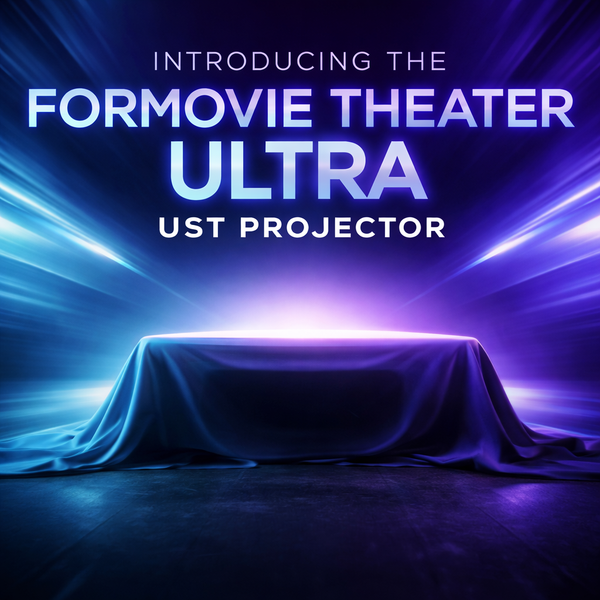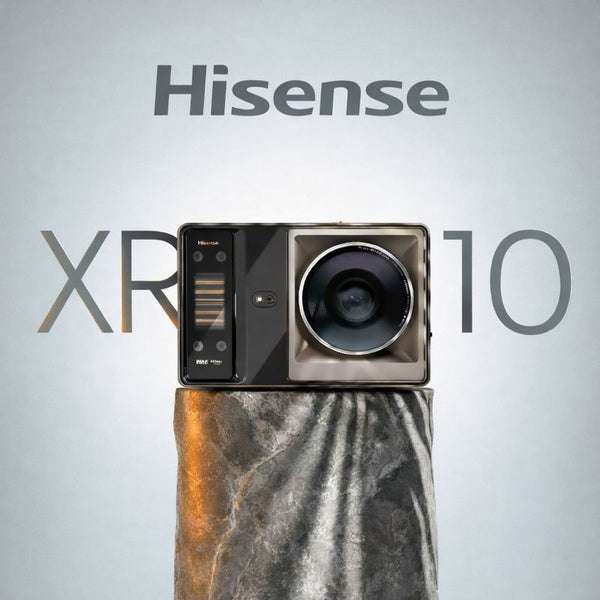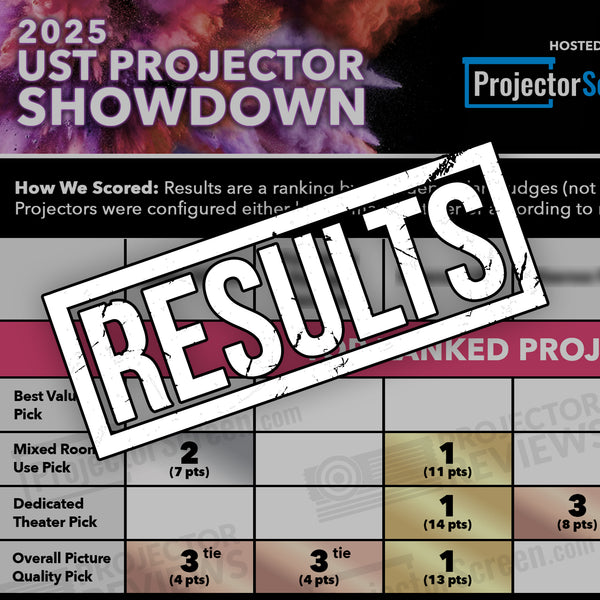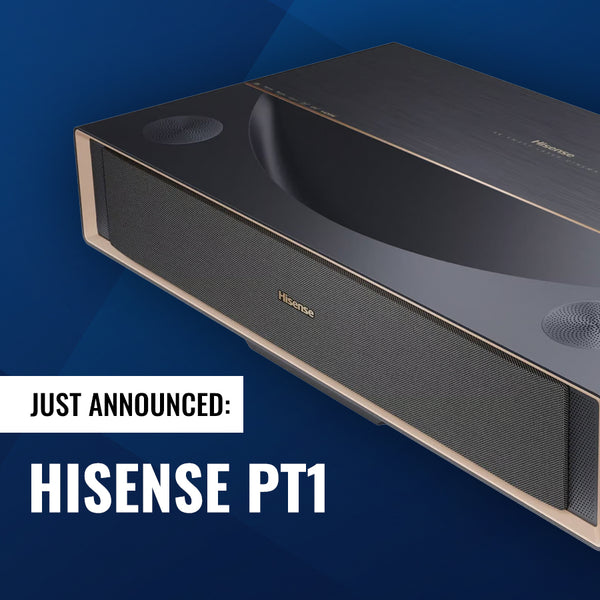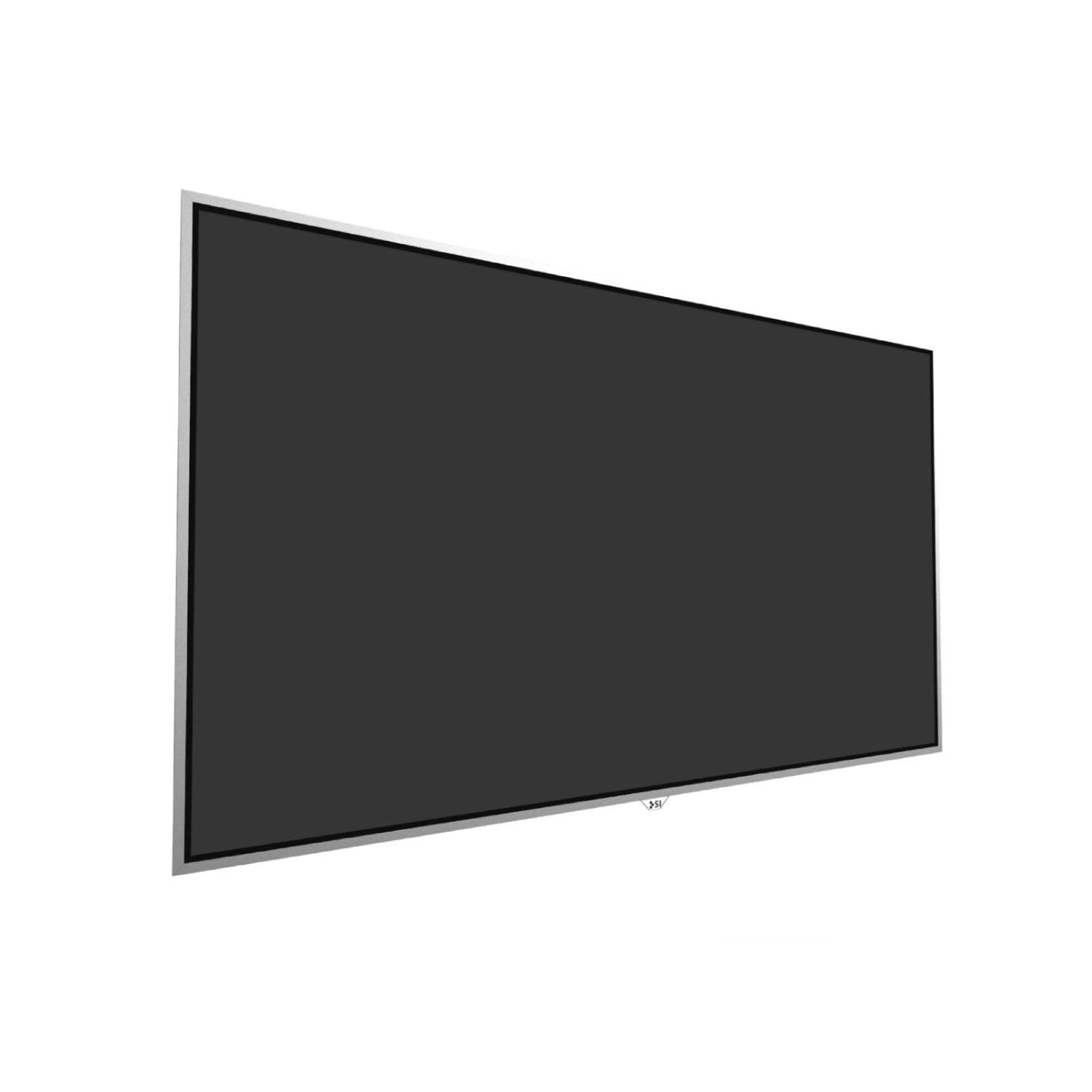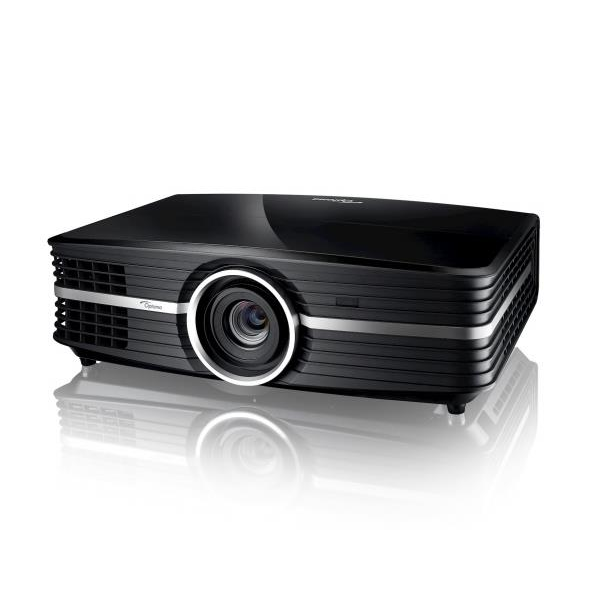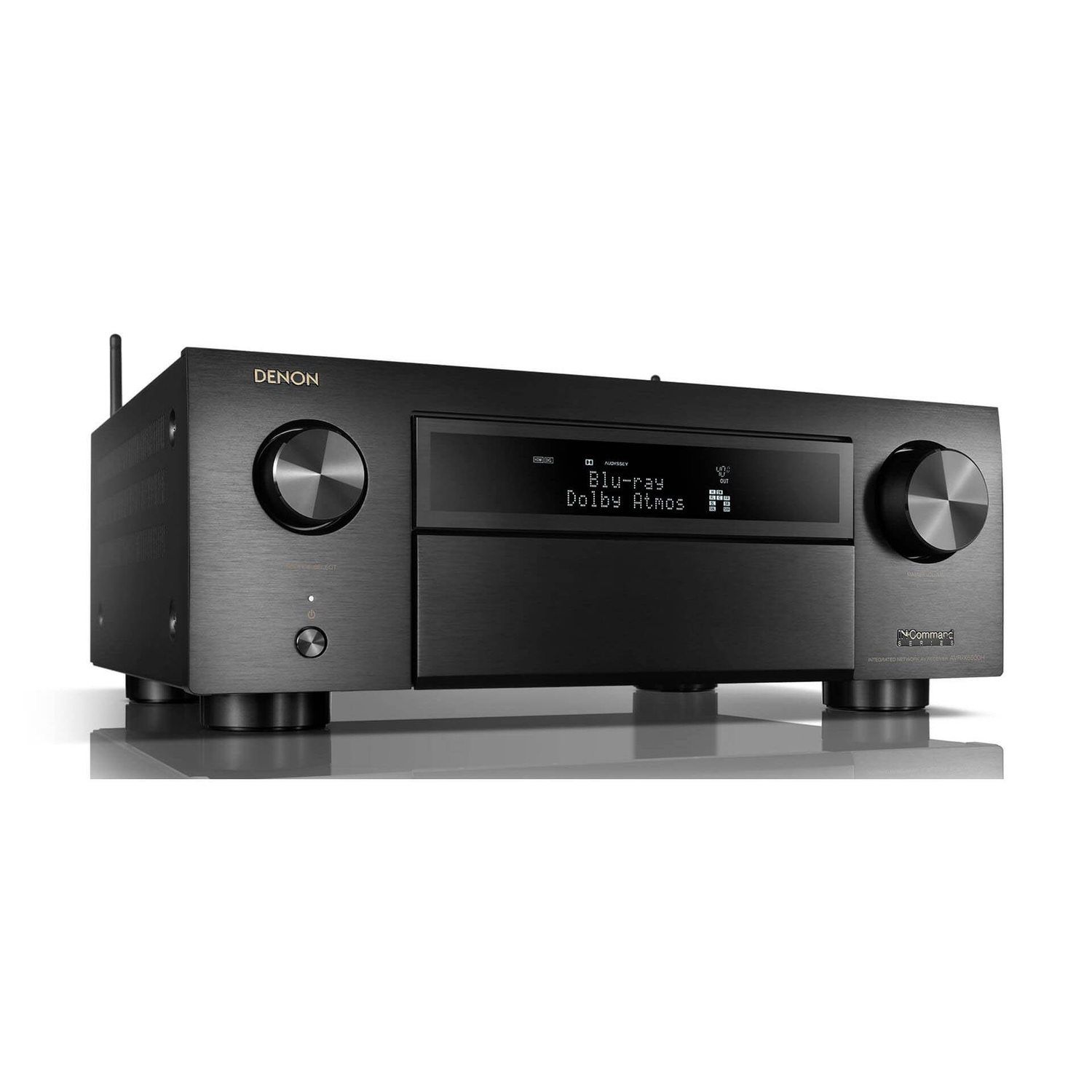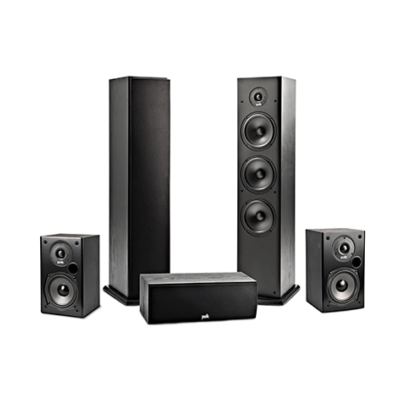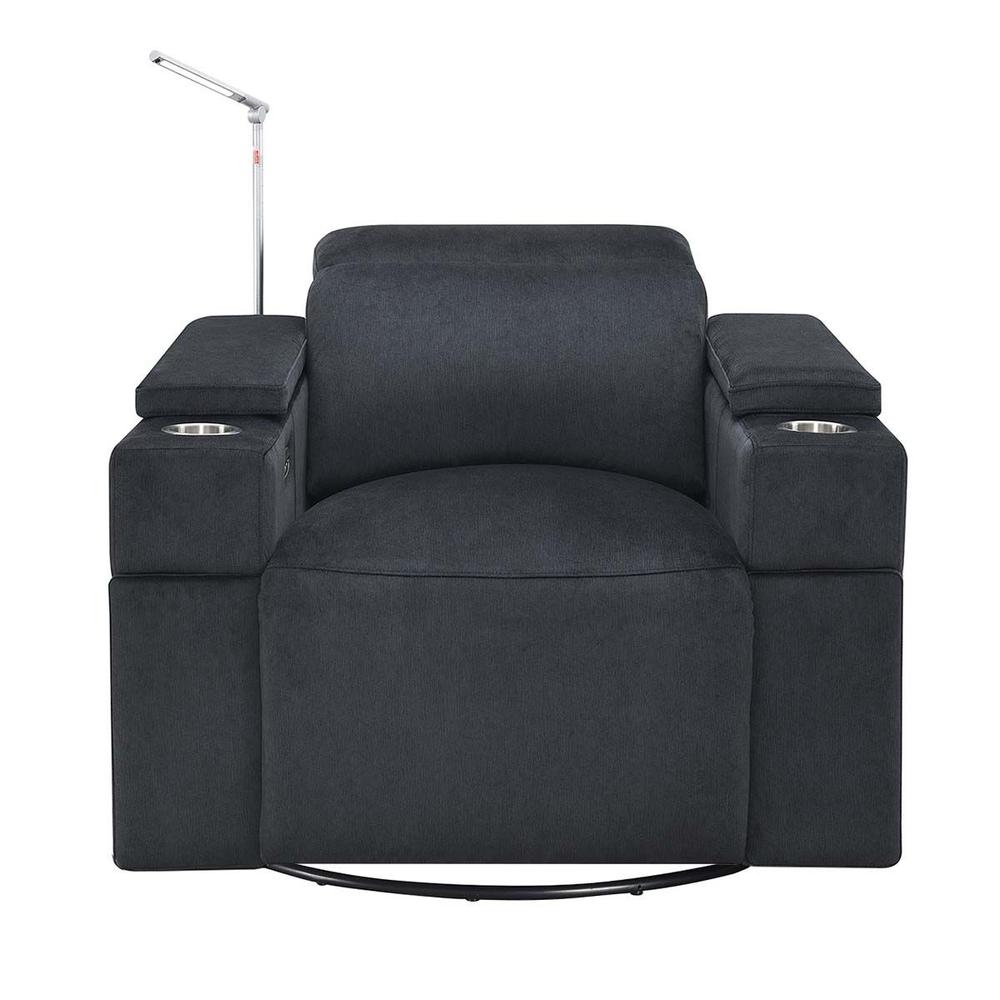Hisense PL1 Ultra Short Throw Projector Review

- Compact size next to othe USTs
- Lower priced 4K laser TV
- Great motion handling
- Vastly improved contrast compared to previous Hisense models
- Abundent picture settings options
- The smartTV functions including built in Netflix
- Incredible sharpness of the image
- Wonderful colorimetry
- Low input lag
- Dual Dolby Vision and HDR-10+ compatibility
- Single laser light source limits brightness and color gamut
- Limited light output for a lights-on projector
- Unnecessary dynamic contrast
- Operating noise just barely passes the acceptable volume
- Only has 2 HDMI ports
This review of the Hisense PL1 comes from our French friend Greg of MondoProjos.com. You can find the original article in French here. The review was done on the European version of the Hisense PL1H, so the specs of the American version may be different. It is not yet available in the USA but you can sign up at the bottom of the page to be notified when it goes on sale.
At the start of this new review, I must admit that concerning the Hisense brand, it has not succeeded in arousing many emotions in me so far. Indeed, their concept of laser TV, namely the combination of an ultra-short-throw laser projector that came with a screen of predetermined size without the possibility of varying it (due to a blocked focus), does not correspond to my ideal home theater projection design.
After paying attention to feedback from consumers and testers, the Chinese manufacturer developed a new lineup of projectors referred to as “laser cinema”. Starting with the launch of the Hisense PX1-Pro, a Red Green Blue triple laser model, (you can read our PX1-Pro review here). The PX1-Pro took third place in our laser TV showdown mainly due to a lack of contrast when compared to the levels offered by the ALPD laser based Formovie Theater .
Hisense then followed the PX1-Pro with the less bright and less expensive Hisense PX1.
Recently Hisense released a third “laser cinema” device that is available on the European market (and will be made available in the USA some time in Spring 2023). This laser cinema UST is the Hisense PL1. Unlike the PX1 and PX1-Pro, this newcomer is only illuminated by a single blue laser block combined with a phosphorus wheel... but we'll see together that they have every intention of coming to shake up the ALPD leaders and push them to their limits!
About The Hisense PL1
The PL1 is therefore a real home cinema projector with variable focus and ultra-short focal length optics (0.25:1 ratio), which makes it possible to broadcast an image of variable size ranging from a minimum of 80 inches diagonally to a maximum of 120 inches (manufacturer's recommendations).
Lightsource And Brightness
The PL1 utilizes a single blue laser and phosphor color wheel that offers excellent longevity (25000 hours). It’s able to produce a light output of 2100 lumens. This makes it perfectly suited for watching tv and movies in a dedicated theater room. If you plan to watch content with the light on, you’ll definitely want to pair it with an ambient light rejecting screen for ultra short throw projectors.
It is not 3D compatible but you know that in my opinion it is not at all a defect as I find the loss of brightness generated by the glasses disabling.
Chipset
The light produced bounces off the micro-mirrors of a 0.47-inch DMD chip with XPR (X4) processing, a principle aimed at reproducing a UHD image by displaying all its details separately and offset at very high speed.
HDR
Like the PX1 Pro already tested, the PL1 is compatible with HDR signals with static metadata (HDR-10 and HLG) but also – and this is much rarer – with Dolby Vision and HDR-10+/ sources. At the moment there are only a few Dolby Vision projectors in the world capable of this tour de force.
So why is it a tour de force? Well, quite simply because the support for dynamic metadata in a completely autonomous and automated way allows the end user to avoid tearing his hair out adjusting the brightness and contrast of his device according to the encoding of the HDR-10 film (static metadata).
In concrete terms, dynamic HDR standards such as HDR10+ and Dolby Vision ensure that the image is perfectly adapted to the scene being played by reading the metadata of your content. Contrast and color saturation can thus be examined and correctly rendered in real time frame by frame. The result: significantly increased image depth with better definition and more targeted brightness peaks. In this way, saturated lights or images that are too dark are a thing of the past. Once you have tasted the comfort provided by this type of source, you no longer want HDR-10!
Dolby Vision and HDR10+ programs are increasingly numerous on the main streaming channels. Dolby Vision is found more often on UHD Blu-Rays than HDR10+.
Built-In Soundbar
The PL1 , in addition to being a projector, is also an independent 2×15W home cinema sound system with Dolby Atmos support. This is a bit underwhelming but chances are you’ll be using an external surround sound system instead of the built in speakers.
Price
The PL1 is currently marketed in Europe at a price of €2,290 with a 2-year warranty and local after-sales service (which is not the case with the Fengmi or Xiaomi competition). While the price of the PL1 hasn't yet been released in the USA we expect it to cost between $2,200 and $2,600. This would make it one of the more affordable 4K ultra short throw projectors available on the market.
Aesthetics
The sleek back body features rounded edges and a luxurious gray fabric covering the built-in speakers.
The PL1 is rather compact (compared to the Formovie Theater for example). Its front measures 53.1 cm with a depth of 33.5 cm and a height of 12 cm, all this for a weight of 8.5 kg.
Throw Ratio
With a .25:1 throw ratio, the PL1 sits an average distance from the screen compared to other UST projectors.
Below the device, two screw feet allow the height of the image to be adjusted mechanically. There is no optical zoom, it is the position of the projector that will determine the size of your image. Thus, to illuminate a 100-inch diagonal screen, the projector had to be moved back 31 cm from the screen with a 41 cm gap upwards between the base of the projector and that of the display surface.
Connectivity And Operating System
Its modern VIDAA U6 operating system offers thousands of apps such as Netflix or Prime Video as well as smartTV functions such as USB media player, Apple Airplay 2, Bluetooth or voice control. Its fixed TV tuners (DVB-T2/T, C and S2/S) allow access to television channels through the antennas of your residence but you can also, as I did, use the integrated Molotov application .
The connectors are installed on the facade facing the screen. Two HDMI inputs are present, one in 2.1 format and the other in 2.0. It does support eARC. For media files, two USB ports are available, one of which is 3.0. Two antenna connectors and an RJ45 complete the picture with audio and Spdif sockets.
The projector also supports Wifi and Bluetooth. It also has a satellite and cable receiver. It receives all common TV signals like DVB-T2 / T / C / S2 and S. The more modern TV interface supports all current functions like EPG (Electronic Program Guide), PVR (Personal Video Recorder) and Time Shifting. It also has a CI+ (Common Interface) slot to receive high-resolution HD channels.
Remote Control
It is a large, long, black remote control which is used to control all these services. But it works in infrared (first lack of taste) and is without lighting (second error). However, it has the advantage of offering direct access keys to Netflix, Molotov, Disney+, Youtube, Prime Video, Netflix, Canal+, etc. I don't place the whole list, just look at the photo below.
SmartTV Menus And Functions
The PL1 from Hisense uses the Vidaa U6 operating system, the most recent operating system that's also utilized by their high-end television models. Thus, in addition to thousands of applications, the main streaming service providers such as Netflix, Prime Video or Disney+ are available in full versions. That means you can use these streaming apps with 4K HDR, Dolby Vision or HDR-10+, if your internet connection allows it. Other features such as Apple Airplay 2, Android screen transfer, Alexa connectivity or voice control are available.
Thanks to its integrated multimedia player, it can play content such as videos, images and music via a USB key or a hard disk, whether formatted in NTFS or FAT32. The following file formats can be played:
Video formats: AVI, WMV, MP4, MOV, 3GP, MKV, MPG, MPEG, VOB, FLV, OGM, WEBM Audio formats: MP4, MP3,
MP2, FLAC, WMA, WAV
Image formats: JPEG, BMP, PNG , GIF, WEBP
The media player is particularly powerful and I didn’t get any errors with the files used.
Calibration
For lovers of settings and calibration, Hisense has thought of everything! The colorimetry can be precisely adjusted thanks to a CMS broken down into hue, saturation and luminosity. The gray scale is adjustable on 2 or 20 points with a separation in offset and Gain. A Gamma editor is also present.
Video processing features a frame interpolation mode for sharper motion and jerk-free 24p movie playback. This option allows, in addition to 3 defined presets, an individual setting of fluidity and sharpness on 10 levels.
The brand has also thought of Gamers with support for 1080p signals at 120hz and an ALLM mode (Auto Low Latency Mode) on its HDMI 2.1 socket. Thanks to its “Gaming” option, unnecessary video processing functions are thus automatically reduced to a minimum, so that control inputs are reproduced without visible delay.
The PL1 also offers several image modes depending on the detected source. For SDR signals standard, cinema day, cinema night, dynamic, sport, filmmaker mode, for HDR standard, cinema and dynamic and for DOLBY VISION bright, dark, custom and game.
The light output of the projector can be finely adjusted on a step ranging from 0 to 10 and a dynamic contrast management device is also present in the menus. Finally, an option for choosing the type and size of the technical screen combined with the projector is available as on the PX1 Pro.
Technical Verdict
Focus And Image Sharpness
Right out of the box the sharpness is very good. The integrated focus pattern translates flawless sharpness from the center (easy) but this quality remains to the furthest edges. As is often the case with Chinese projectors, the sharpness setting tends to overdo it, which causes doubled lines on the crosses that act as accuracy checks. And again to make them disappear, just lower the level of the sharpness value.
Colorimetry And Gamma
The laser implemented in the PL1 relies on the X-fusion process based on the principle of phosphorus technology. The X-Fusion ray is so narrow that the light waves are extremely pure and scattering (refraction of light) problems are minimized. This makes it possible to obtain very pure natural colors with high saturation.
Thus, despite a solo blue laser, the PL1 displays a wide Gamut covering 90.3% of the DCI-P3 color space. It is certainly less good than a triple laser trichroma solution but it remains well above the performance of a UHP lamp. This also gives it one of the highest color gamuts of any single laser UST projector.
The performance in terms of colorimetric fidelity is quite good out of the box with the “cinema day” and “cinema night” selections which are close to 6500K with smaller deltaA differences than in the other modes. The Gamma is very well adjusted in the factory and does not require any particular intervention. However, thanks to the many options in the menus, it is possible to achieve better results and to adjust the Gamut and the color temperature more precisely.
I started from the standard mode (all selections are editable, there is no dedicated user memory) to try to keep as much brightness as possible. Indeed, this selection is the brightest but it comes with a color temperature that is too cold, in this case 9714K.
After calibration, a color temperature of 6523K is obtained with a deltaE deviation of 3.25 and an average Gamma of 2.18. For this I applied the following fixes:
For the management of static HDR signals, the PL1 does not have dynamic tone mapping. It applies a fixed signal management, forced to 1000 nits, which requires adjusting contrast and brightness individually for encodings above this value.
Fortunately, there's no need to call Captain Tom and his jet, none of this is necessary with Dolby Vision and HDR-10+ signals. Concerning them, everything is automated and in a beautiful way because I could not highlight any defect of restitution with the test scenes of the 4K HDR Spears and Munsils suite.
Contrast and Brightness
I didn't understand why Hisense limited this projector to a maximum screen size of 120 inches until I measured the brightness of the device. The PL1 is particularly bright in the standard and dynamic modes but with too cold color temperatures. As soon as we go through the cinema selections with a more consistent gray scale, the brightness is reduced by half. It is for this reason that I started from the standard selection to calibrate the device and keep some of this dynamic with correct colors.
After calibration, it remains at full laser power 1047 lumens, which allows the new Hisense to maintain 26 fL with an HDR image on a 100 inch projector screen.
On the other hand, a big (and excellent) surprise! I report 3456:1 native contrast in standard mode. It's as good as ALPD laser projectors. This is a huge leap forward for the Hisense USTs which were rather confined to 1000:1. After calibration we lost a bit of contrast with 1917:1 but visually it's still very good and well above what the brand had offered us so far. Some of the hitherto exclusive secrets of ALPD laser UST optics seem to have leaked!
Regarding the dynamic contrast, my measurements of the 3 different levels have not changed one iota and as its activation leads to the highlighting of speckle. I can only encourage you not to use it.
Motion Handling
With its DMD 0.47 chip, the PL1 converts all incoming signals to 60hz which generates a bad 3:2 pulldown and judder issues. Fortunately, the video processing of this projector incorporates a fluidity aid device.
The calculation of intermediate images or interpolation of images called Smooth Motion by Hisense ensures greater motion sharpness and judder-free 24p movie playback. In principle, as you know, a powerful processor calculates then inserts the necessary intermediate images, which in fact multiplies their number per second. Fast movements and camera movements are thus perceived more fluidly, which benefits sports broadcasts and action scenes in particular. The Smooth Motion even allows, in addition to 3 presets, an individual adjustment of the reduction of the judder effect and the definition on 10 levels. For my part, I use the user mode, which I set to 7 on a scale of 10. This is the best compromise I have found to have a flawless image with movements that remain natural.
I know that some purists howl heresy against this kind of option but personally I can not do without it. It really helps to reduce or even eliminate all traces of judder. Anyway, for those who can't stand the overly video effect of frame interpolation, they can always disable it or select filmmaker mode which neutralizes any form of processing applied to the image.
Input lag
After activating the “ Game Mode” option , I note a display delay of 46.6 ms on a UHD signal at 60hz. This is enough for the PL1 to benefit from a recommendation to be used for network video games. Note that the new Hisense is compatible with 120hz on 1080p sources, which further reduces the level of lag by half.
When it comes to gaming this isn't’ terrible, but not one par with the top gaming ust projectors like the Epson LS800.
Overscan
The management of the cropping or overscan setting is deactivated by default, which allows the PL1 to project a complete image conforming to that of the source. As for the PX1 Pro and despite the use of a DMD 0.47 chip, I was unable to highlight the light gray border that is typical of this chipset from Texas Instruments.
Laser Speckle
The technology for producing and broadcasting an image from a laser or triple laser light source is likely to suffer from the “speckle” effect. This visual defect takes the appearance of a myriad of small dots deteriorating the uniformity of an image. On this point, I found that it is necessary at all costs to avoid activating the dynamic contrast. Indeed, not only does it cause no gain in contrast but it tends to generate all the more speckle the higher its selected level (low, medium, high, the latter being the worst). So, to live happily with the PL1, don't activate the dynamic contrast.
Operating Noise And Integrated Sound System Quality
In theory, given the fine laser power management option available in the projector menus, the operating noise of the cooling system should be modulated by the drop in dynamic range. However, in reality it is not so. In all the configurations, my sound level meter, placed 50 cm from the projector, persisted in displaying 37.9 dB. The residual noise in my test room being 36 dB, the PL1 can be described as a moderately noisy projector.
The sound system with its 2x15W speakers will certainly cover the ventilation noise, but we will agree that the reasoning is pernicious; it would really be better for manufacturers to make real efforts on the silence of their products. My grandmother, who rode a bicycle, was mainly ENT and would certainly have resorted to the same truism. To return to the sound capabilities of the system, those of Dolby Atmos are more noticeable in the “cinema” selection. The other modes are less impressive. For a small room like my dedicated room (10 m²), it can be sufficient on its own, but for larger rooms it is better to consider an external solution.
Power Consumption
At the maximum power of the laser (10), I note an energy consumption of 231.8W. By halving the level, the electricity requirements drop to 189.9W to end at 159.9W at the lowest level. The PL1 is a little greedy , it is much higher than on the PX1 for a brightness that is nevertheless lower, strange!
Subjective Opinion
Before discussing the part dedicated to the visual impressions left by this Hisense UST , I would first like to mention one of the greatest satisfactions that this model has given me, namely the simplicity of implementation.
Let me explain: once you have passed the installation stage, the wifi configuration and the introduction of the different passwords for the streaming channels, well, all you have to do is let yourself go. The PL1 perfectly plays its role as an all-in-one solution including in a single box the projector, the home cinema amplifier, the media player or other devices. Many manufacturers promise it but few actually manage to achieve it. Netflix, Prime Video, Canal+ all work without limitation. The internal media player is truly universal.
While the PL1 excels with 4K sources, its internal video processing applies convincing upscaling to 1080p sources like the space and ground battle scenes of my Rogue One Blu-ray. If it does not neglect the "old" sources, the new Hisense is a champion of the restitution of a 4K image. On Netflix in 4K Dolby Vision or Amazon Prime Video with Black Hearts in HDR10+. Contrast, sharpness and fluidity are among the best obtained with an ultra short focal length laser model. Moreover, the famous Filmmaker Mode advocated by purists pales in comparison to the sublime HDR10+/Dolby Vision images.
We can take the opportunity to tackle the big brands like JVC or SONY who sell their laser models at exorbitant prices but which in 2023 still do not offer dual Dolby Vision/HDR10+ compatibility... and the PL1 is only €2290!
Conclusion
In terms of visual and sound performance, the Formovie Theater remains my favorite but the PL1 shakes it up on many points. It already allows you to free yourself from any external source to benefit from your favorite streaming programs.
In addition, it offers this dual Dolby Vision and HDR10+ capability that does not exist in any other brand of projectors at the moment. Once you've tasted the visual pleasures offered by the gains in dynamics, sharpness and contrast offered by dynamic metadata, it's hard to go back. Finally, it should also be noted that the product is distributed internationally and benefits locally from an after-sales service and a guarantee. It is for all these reasons that the gleaming and casually coveted Gold Award mondoprojos.fr . We bet that this is only the first of a long line of successful models!

